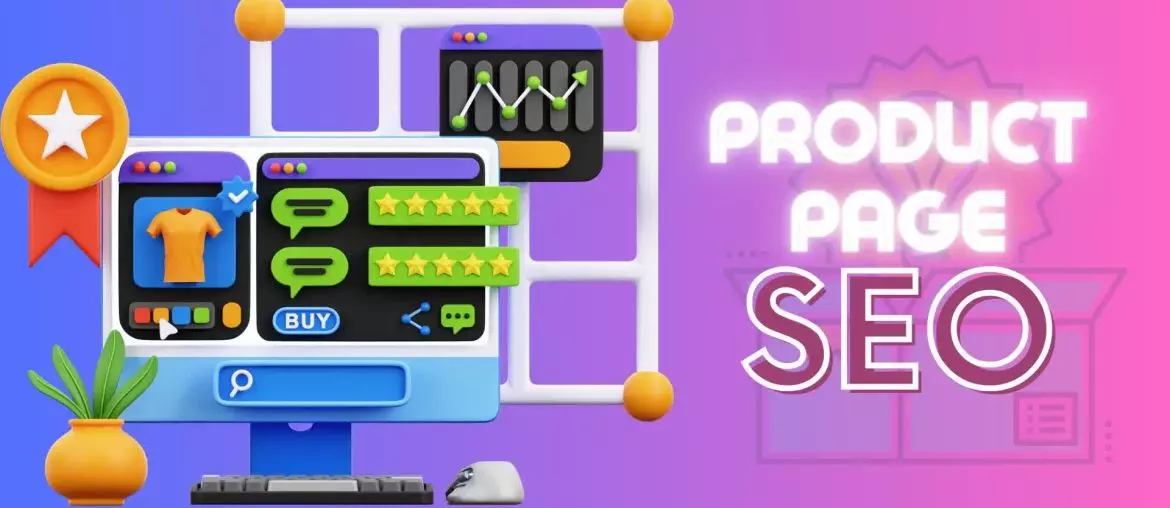Product category page SEO is a critical aspect of any e-commerce website’s online marketing strategy. It involves optimizing product category pages for search engines to improve their visibility and ranking in search engine results pages (SERPs). By optimizing product category pages, businesses can increase their organic traffic, improve user experience, and drive more sales.
Understanding product category pages is the first step in optimizing them for search engines. Product category pages are pages on an e-commerce website that display a list of products that belong to a specific category. They help users navigate the website and find the products they are looking for. Optimizing product category pages involves understanding the difference between category landing pages (CLPs) and product listing pages (PLPs) and optimizing both for search engines.
Keyword research for categories is an essential part of product category page SEO. It involves identifying the keywords that users are searching for and incorporating them into the category page’s content. Keyword research helps businesses understand their customers’ needs and preferences and create content that meets those needs. By optimizing product category pages for the right keywords, businesses can increase their visibility in search engine results pages and attract more organic traffic.
Key Takeaways
- Understanding product category pages is essential to optimizing them for search engines.
- Keyword research for categories is crucial to identifying the right keywords to optimize for.
- Optimizing on-page elements, content strategy, internal linking, user experience, and technical SEO considerations are key to successful product category page SEO.
Understanding Product Category Pages
Product category pages are a crucial component of e-commerce websites. They help organize the products into different categories and subcategories, making it easier for the customers to find what they are looking for. In this section, we will discuss the role of product category pages in e-commerce SEO and their hierarchy and structure.
Role in E-Commerce SEO
Product category pages play a vital role in e-commerce SEO. They help search engines understand the structure of the website and the relationships between different pages. By optimizing the category pages, e-commerce websites can improve their search engine rankings and attract more traffic to their site.
One of the most important aspects of optimizing product category pages is to ensure that the URLs are descriptive and contain relevant keywords. This helps search engines understand the content of the page and rank it accordingly.
Another crucial factor in optimizing product category pages is to include high-quality images and descriptive product titles. This not only helps customers find what they are looking for but also improves the overall user experience of the website.
Hierarchy and Structure
The hierarchy and structure of product category pages are essential for both customers and search engines. The categories should be organized in a logical and intuitive manner, with the most important categories at the top of the hierarchy.
One way to structure product category pages is to use a tree-like structure, with broad categories at the top and more specific subcategories below. This makes it easier for customers to navigate the site and find what they are looking for.
Another important aspect of the hierarchy and structure of product category pages is to ensure that they are consistent across the website. This helps search engines understand the structure of the site and improves the overall user experience.
In conclusion, product category pages are a critical component of e-commerce SEO. By optimizing the structure and content of these pages, e-commerce websites can improve their search engine rankings and attract more traffic to their site.
Keyword Research for Categories
Keyword research is a crucial aspect of optimizing product category pages for search engines. By conducting thorough keyword research, businesses can identify the most relevant and valuable keywords for their product categories, and optimize their content accordingly.
Identifying Target Keywords
The first step in keyword research for product category pages is to identify the target keywords that are most relevant to the products and services being offered. This can be done by brainstorming a list of potential keywords that customers might use to search for the products in question.
Businesses can also use keyword research tools to identify relevant keywords and phrases. These tools can provide valuable insights into the search volume and competition for different keywords, helping businesses to identify the most valuable keywords for their product categories.
Search Volume and Competition Analysis
Once target keywords have been identified, businesses should analyze the search volume and competition for each keyword. This will help them to identify the most valuable keywords for their product categories, and optimize their content accordingly.
Search volume refers to the number of searches that are conducted for a particular keyword or phrase. High search volume keywords are generally more valuable, as they indicate a higher level of interest in the products or services being offered.
Competition analysis involves assessing the level of competition for each keyword. High competition keywords may be more difficult to rank for, and may require more time and effort to optimize effectively.
By conducting thorough keyword research and analysis, businesses can identify the most valuable keywords for their product categories, and optimize their content accordingly. This can help to improve search engine rankings, drive more traffic to their website, and ultimately increase sales and revenue.
On-Page SEO Elements
When optimizing product category pages for SEO, there are several on-page elements that should be considered. These elements include optimized title tags, meta descriptions, header tags, and category descriptions.
Optimized Title Tags
The title tag is one of the most important on-page SEO elements. It is the title that appears in the search engine results page (SERP) and gives users an idea of what the page is about. It is recommended to include the primary keyword in the title tag and keep it under 60 characters to avoid truncation.
Meta Descriptions
The meta description is the short summary that appears below the title tag in the SERP. It should be compelling and accurately describe the content of the page. It is recommended to keep the meta description under 155 characters to avoid truncation.
Header Tags
Header tags (H1, H2, H3, etc.) are used to structure the content of the page. The H1 tag is typically used for the main heading of the page, and subsequent header tags are used for subheadings. It is recommended to include the primary keyword in the H1 tag and use header tags to structure the content in a logical and easy-to-read manner.
Category Descriptions
Category descriptions provide additional information about the products in the category. They should be unique, informative, and include the primary keyword. It is recommended to keep category descriptions between 150 and 300 words.
By optimizing these on-page elements, product category pages can improve their visibility in the search engine results and provide a better user experience for visitors.
Content Strategy for Product Categories
When it comes to optimizing product category pages for SEO, content strategy plays a crucial role. Here are two important aspects of content strategy to keep in mind:
Unique Content Creation
Creating unique and high-quality content for each product category page is essential for SEO. This includes writing a detailed description of the category, including relevant keywords, and providing useful information to potential customers.
In addition to the category description, consider adding user-generated content such as reviews and ratings. This not only adds unique content to the page but also helps to build trust with potential customers.
Content Freshness
Updating the content on product category pages regularly is important for SEO. This can include adding new products, updating product descriptions, and adding new user-generated content.
Regularly updating the content on product category pages signals to search engines that the website is active and relevant. This can help to improve search engine rankings and drive more traffic to the website.
In summary, creating unique and fresh content for product category pages is essential for SEO. By following these content strategy tips, website owners can improve their search engine rankings and drive more traffic to their websites.
Internal Linking Practices
Internal linking is an essential aspect of Product Category Page SEO. It is the practice of linking pages within the same website to improve a website’s overall search engine optimization. Internal linking is a powerful tool that can help search engines understand the structure of a website and the relationships between different pages. In this section, we will discuss two types of internal linking practices: Navigational Links and Contextual Linking.
Navigational Links
Navigational links are links that help users navigate a website. These links are usually located in the header or footer of a website and are used to provide users with easy access to important pages. Navigational links are also useful for search engines as they help to establish the hierarchy of a website.
To optimize Product Category Pages for SEO, it is important to include navigational links that are relevant to the products or services being offered. For example, if a website sells shoes, the navigational links should include categories such as “Men’s Shoes,” “Women’s Shoes,” and “Kids’ Shoes.” By including these links, search engines can easily understand the structure of the website and how the different pages are related to each other.
Contextual Linking
Contextual linking is the practice of linking relevant pages within the content of a website. Contextual links are useful for both users and search engines as they provide additional information about a topic and help to establish the relevance of a page.
To optimize Product Category Pages for SEO, it is important to include contextual links that are relevant to the products or services being offered. For example, if a website sells cameras, a Product Category Page for “Digital Cameras” should include contextual links to pages about “Camera Accessories,” “Camera Lenses,” and “Camera Bags.” By including these links, search engines can understand the relevance of the Product Category Page and how it relates to other pages on the website.
In conclusion, internal linking is an essential aspect of Product Category Page SEO. By including navigational links and contextual links, website owners can improve their website’s overall search engine optimization and provide users with a better browsing experience.
User Experience Optimization
When it comes to optimizing product category pages for SEO, it’s not just about keywords and meta tags. The user experience (UX) is also a critical factor that can impact the success of your website. Here are some key considerations for optimizing the UX of your product category pages.
Mobile Responsiveness
With more and more people using their mobile devices to browse the internet, it’s essential to ensure that your product category pages are mobile-friendly. This means that the pages should be optimized for smaller screens and touch-based navigation. A responsive design can help ensure that your website looks good and functions well on any device.
Page Load Speed
Page load speed is another critical factor that can impact the UX of your product category pages. Slow-loading pages can frustrate users and lead to high bounce rates. To improve page load speed, consider optimizing images, reducing the number of HTTP requests, and using a content delivery network (CDN).
Breadcrumb Navigation
Breadcrumb navigation can help users understand where they are on your website and how to navigate to other pages. This is especially important for product category pages, where users may be looking for specific products or information. Breadcrumb navigation can also help search engines understand the structure of your website and improve your SEO.
By optimizing the UX of your product category pages, you can improve the user experience and drive more traffic to your website. Keep these considerations in mind when designing and optimizing your website to ensure that your product category pages are both user-friendly and search engine-friendly.
Technical SEO Considerations
When it comes to Product Category Page SEO, there are several technical considerations that can help improve the visibility and ranking of your pages. Two important technical SEO considerations for Product Category Pages are Canonical Tags and Schema Markup.
Canonical Tags
Canonical tags are HTML tags that tell search engines which version of a page to index when there are multiple versions of the same page. This is important for Product Category Pages because there may be multiple URLs that lead to the same page, such as when a user filters products by price, colour, or size. By using canonical tags, you can consolidate the ranking signals for these pages and avoid duplicate content issues.
When implementing canonical tags for Product Category Pages, it’s important to ensure that the canonical tag points to the correct URL. This means that the canonical tag should point to the URL that has the most complete and relevant content for the category, rather than a filtered version of the page.
Schema Markup
Schema markup is a type of structured data that provides additional information about the content on a page to search engines. This can help search engines understand the context of the content and improve the visibility of the page in search results.
For Product Category Pages, schema markup can be used to provide information about the products in the category, such as the product name, description, image, and price. This can help search engines display rich snippets in search results, which can increase click-through rates and improve the visibility of the page.
When implementing schema markup for Product Category Pages, it’s important to use the appropriate schema markup for the content on the page. This means using schema markup for products, categories, and other relevant content, and ensuring that the schema markup is accurate and up-to-date.
By considering these technical SEO factors when optimizing Product Category Pages, you can improve the visibility and ranking of your pages in search results and drive more traffic to your site.
Measuring SEO Success
When it comes to measuring the success of product category page SEO, there are a few key performance indicators (KPIs) that can be used to track and assess progress.
Key Performance Indicators
One important KPI is organic traffic. This can be measured using tools such as Google Analytics or Google Search Console. By tracking the number of visitors to a product category page and where they are coming from, it is possible to determine the effectiveness of SEO efforts.
Another KPI to consider is the click-through rate (CTR) of a product category page. This can be measured by looking at the number of clicks a page receives divided by the number of impressions it gets in search results. A high CTR indicates that a page is effectively optimized for search engines and is appealing to users.
Analytics and Reporting
To effectively measure SEO success, it is important to regularly analyze and report on KPIs. This can be done using tools such as Google Analytics or other analytics platforms. By regularly reviewing and reporting on KPIs, it is possible to identify areas for improvement and make data-driven decisions to optimize product category pages.
In addition to regular reporting, it is important to set goals and track progress towards those goals. By setting specific, measurable, achievable, relevant, and time-bound (SMART) goals, it is possible to stay focused on improving SEO and achieving desired outcomes.
Overall, measuring the success of product category page SEO requires a combination of data analysis, reporting, and goal setting. By regularly tracking KPIs and making data-driven decisions, it is possible to optimize product category pages and drive organic traffic to a website.
Conclusion
Optimizing product category pages for SEO is a crucial aspect of any eCommerce business. By following the tips and strategies outlined in this article, businesses can improve their visibility on search engines, increase traffic to their website, and ultimately boost their sales.
One important aspect of optimizing product category pages is to ensure that they have a clear and logical structure. This includes using a hierarchical structure with parent categories and subcategories, as well as providing users with a breadcrumb trail to help them navigate the website.
In addition to having a clear structure, product category pages should also be optimized for relevant keywords. This includes incorporating keywords into the page titles, meta descriptions, and content. However, it is important to avoid keyword stuffing and to focus on providing high-quality, informative content that is useful to users.
Another important aspect of optimizing product category pages is to ensure that they are mobile-friendly. With more and more users accessing websites on mobile devices, it is crucial for businesses to ensure that their website is optimized for mobile devices.
Finally, businesses should regularly analyze their product category pages to identify areas for improvement. This includes analyzing user behaviour on the website, monitoring search engine rankings, and making changes to the website as needed.
By following these tips and strategies, businesses can improve their product category page SEO and ultimately drive more traffic and sales to their website.
Frequently Asked Questions
How can I effectively optimize my product category pages for better search engine rankings?
To optimize your product category pages for better search engine rankings, you need to ensure that your pages are properly structured with relevant keywords and meta tags. Additionally, you should focus on creating high-quality content that is both informative and engaging for your target audience. It’s also important to ensure that your site’s navigation is user-friendly and that your products are categorized in a logical and intuitive manner.
What are the best practices for designing an eCommerce category page to enhance its SEO?
When designing an eCommerce category page, it’s important to focus on creating a clean and simple layout that is easy to navigate. You should also ensure that your page is optimized for mobile devices and that your site’s load times are fast. Additionally, you should include high-quality images of your products and ensure that your product descriptions are both accurate and informative.
What type of content should be included on category pages to improve SEO performance?
To improve the SEO performance of your category pages, you should focus on creating high-quality content that is both informative and engaging for your target audience. This can include product descriptions, customer reviews, and blog posts that are relevant to your products or industry. You should also ensure that your content is optimized with relevant keywords and meta tags.
How does the structure of a product category page influence its SEO value?
The structure of a product category page can have a significant impact on its SEO value. Pages that are well-structured with clear headings and subheadings, relevant keywords, and meta tags are more likely to rank well in search engine results pages. Additionally, pages that are easy to navigate and provide a positive user experience are more likely to attract and retain visitors.
Can including a blog within my product category pages improve the overall SEO of my site?
Yes, including a blog within your product category pages can improve the overall SEO of your site. Blog posts that are relevant to your products or industry can help to attract more visitors to your site and improve your site’s authority and relevance in search engine results pages. Additionally, blog posts can help to provide valuable information to your target audience and establish your brand as a thought leader in your industry.
What are common mistakes to avoid when creating SEO-friendly product category pages?
Common mistakes to avoid when creating SEO-friendly product category pages include using duplicate content, neglecting to optimize your pages with relevant keywords and meta tags, and failing to provide a positive user experience. Additionally, you should avoid using too many ads or pop-ups on your pages, as this can negatively impact your site’s user experience and SEO performance.
 Singapore
Singapore  Singapore
Singapore Malaysia
Malaysia






























 With the rise of video content in recent years, it is no surprise that it will continue to dominate the eCommerce
With the rise of video content in recent years, it is no surprise that it will continue to dominate the eCommerce 
